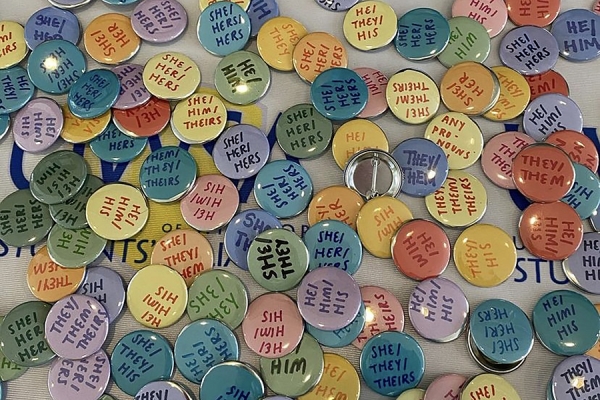 A new campus resource is aimed at normalizing the use of pronouns pronouns differing from the binary of she/her and he/him.
A new campus resource is aimed at normalizing the use of pronouns pronouns differing from the binary of she/her and he/him.
A new campus resource to aid in normalizing and respecting the use of pronouns differing from the binary of she/her and he/him is one step in the right direction in affirming diverse gender identity on campus, says a UWindsor student advocate.
Fei Qin, a student of political science and communications, media, and film who identifies as non-binary, and provost Patti Weir began work about two years ago to produce a comprehensive guide to understanding pronouns as a reference for instructors, students, staff, and visitors to campus.
Qin says they began considering the initiative when they not only realized they had choice in their own pronoun use, but that others were experiencing similar challenges.
“We use pronouns in everyday life, even if we don’t realize it. As I’ve come through my own journey navigating my sexuality and gender, I’ve come to realize that gender is a construct which only exists because we all perform it,” Qin says.
“People like me have existed throughout history, and the usage of different pronouns is not new. The first time I encountered someone using they/them/theirs pronouns I was shocked that an option like that existed.”
Qin says because gender pronouns are reinforced through social relationships, they were keen to use these interactions as a way to educate the campus community on why their proper and appropriate use is so vital to creating a safe and welcoming campus community for all.
“Disregarding an individual’s gender identity denies them a significant part of themselves,” says Dr. Weir. “We wanted to give our community the right tools to be able to engage respectfully with each other, and gain an understanding of the power of language in creating a safe, welcoming, and inclusive environment where everyone thrives.”
A taped video discussion on the subject among members of the 2SLGBTQIA+ community is also intended to provide users with a greater understanding of the challenges experienced by individuals who use pronouns outside of the reinforced Western gender binary.
“People may not understand the impact being misidentified can have,” Qin says. “We’re hoping that by sharing our stories people can hear our personal experiences and get a better perspective on why this is so important.”
